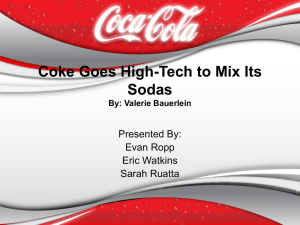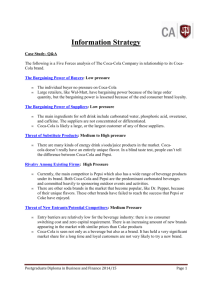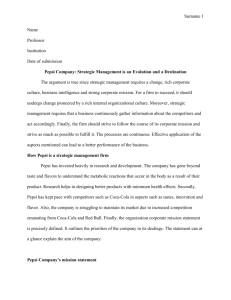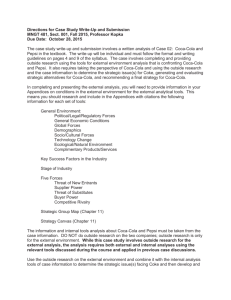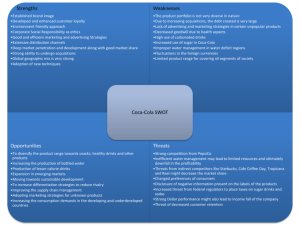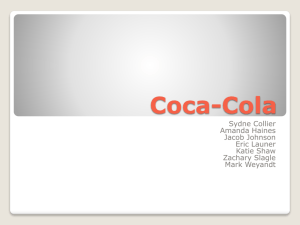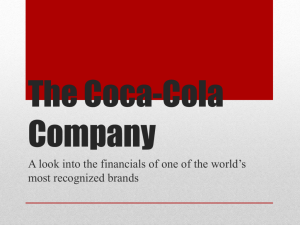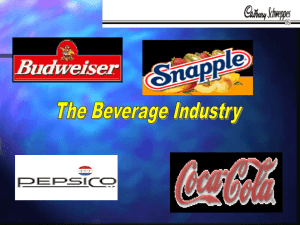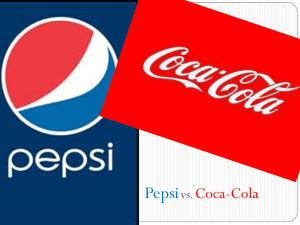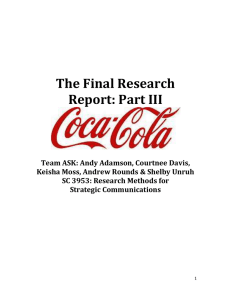Pepsi - Ms. Soris' Website
advertisement
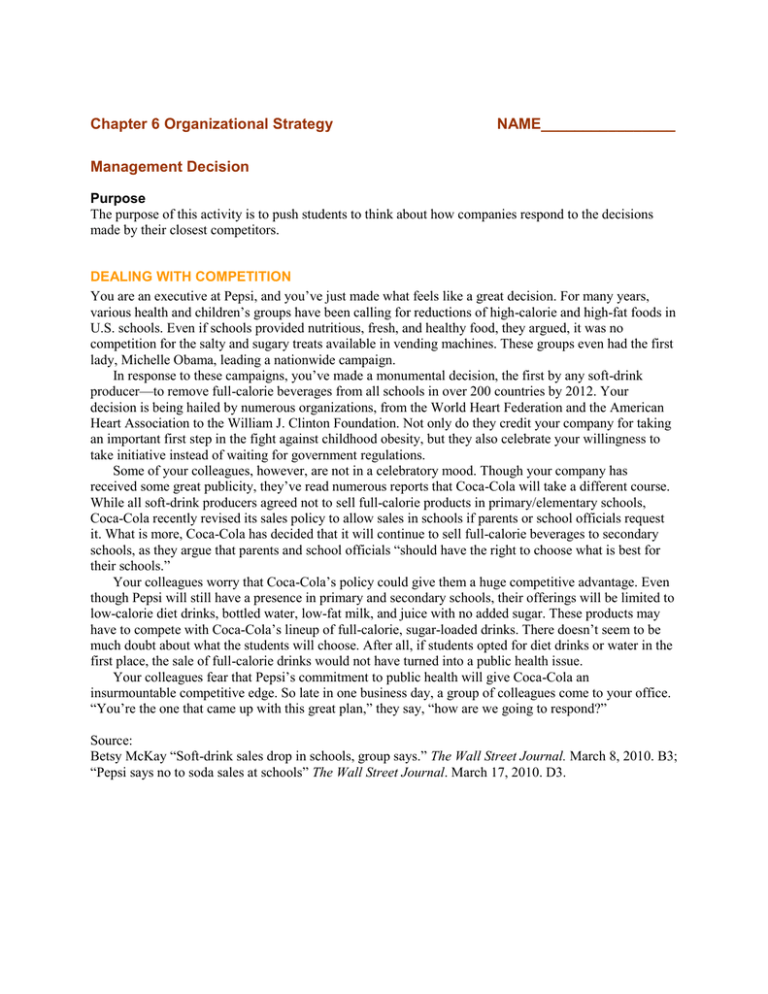
Chapter 6 Organizational Strategy NAME________________ Management Decision Purpose The purpose of this activity is to push students to think about how companies respond to the decisions made by their closest competitors. DEALING WITH COMPETITION You are an executive at Pepsi, and you’ve just made what feels like a great decision. For many years, various health and children’s groups have been calling for reductions of high-calorie and high-fat foods in U.S. schools. Even if schools provided nutritious, fresh, and healthy food, they argued, it was no competition for the salty and sugary treats available in vending machines. These groups even had the first lady, Michelle Obama, leading a nationwide campaign. In response to these campaigns, you’ve made a monumental decision, the first by any soft-drink producer—to remove full-calorie beverages from all schools in over 200 countries by 2012. Your decision is being hailed by numerous organizations, from the World Heart Federation and the American Heart Association to the William J. Clinton Foundation. Not only do they credit your company for taking an important first step in the fight against childhood obesity, but they also celebrate your willingness to take initiative instead of waiting for government regulations. Some of your colleagues, however, are not in a celebratory mood. Though your company has received some great publicity, they’ve read numerous reports that Coca-Cola will take a different course. While all soft-drink producers agreed not to sell full-calorie products in primary/elementary schools, Coca-Cola recently revised its sales policy to allow sales in schools if parents or school officials request it. What is more, Coca-Cola has decided that it will continue to sell full-calorie beverages to secondary schools, as they argue that parents and school officials “should have the right to choose what is best for their schools.” Your colleagues worry that Coca-Cola’s policy could give them a huge competitive advantage. Even though Pepsi will still have a presence in primary and secondary schools, their offerings will be limited to low-calorie diet drinks, bottled water, low-fat milk, and juice with no added sugar. These products may have to compete with Coca-Cola’s lineup of full-calorie, sugar-loaded drinks. There doesn’t seem to be much doubt about what the students will choose. After all, if students opted for diet drinks or water in the first place, the sale of full-calorie drinks would not have turned into a public health issue. Your colleagues fear that Pepsi’s commitment to public health will give Coca-Cola an insurmountable competitive edge. So late in one business day, a group of colleagues come to your office. “You’re the one that came up with this great plan,” they say, “how are we going to respond?” Source: Betsy McKay “Soft-drink sales drop in schools, group says.” The Wall Street Journal. March 8, 2010. B3; “Pepsi says no to soda sales at schools” The Wall Street Journal. March 17, 2010. D3. Questions 1. Using Porter’s five industry forces, map the soft-drink industry. , 2. What are the risks and opportunities of the strategies followed by Pepsi? Of Coca-Cola? 3. How would you respond to Coca-Cola’s change in sales policy? How would you ensure Pepsi’s board that this response will allow you to remain competitive and profitable?
